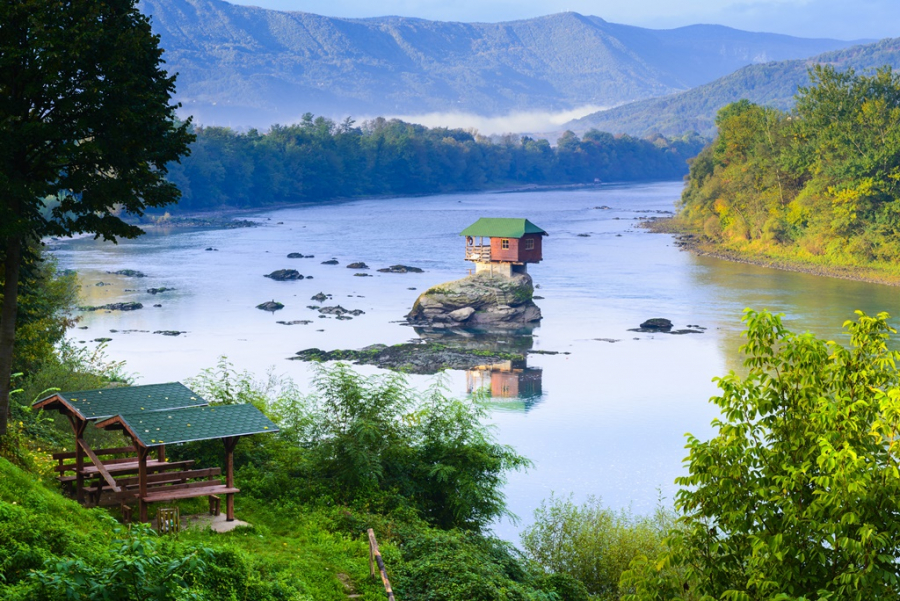Water is an exceptionally attractive motive to generate sustainable - “soft” - tourism activities. Activities for investors, operators and above all the guests/ market.
Water is not only a life guaranteeing ingredient (one cannot live without water), but it does also have as well a strong emotional dimension. This aspect is one of the underlying causes for tourism-related water activities.
Water & Tourism - a pragmatic - overview on 5 Segments in Serbia – Hungary - Croatia
Already the “Old Romans” knew it: “SANUS PER AQUAM” - Health through Water.!
Below I have selected Five Segments of WATER TOURISM for countries participating with the INTERNATIONAL WATER CONFERENCE:
In today´s tourism-related view this abbreviation stands for a specific – and most successful segment of tourism – the “SPA TOURISM” / to be seen different from “Wellness Tourism”.
1.) SPA Tourism could be developed further to a significant element in Serbia - Hungary and Croatia.
Be it VRNJACKA BANJA and PROLOM BANJA in Serbia, or HEVIZ SPA and GELLERT THERMAL SPA in Hungary or TERME TUHELJ and ISTARSKE TOPLICE in Croatia, they all provide health and comfort by innovative means and sophisticated services always based on thermal water.
An “internationalisation” supported by a focus on clearly defined SPA services & products could attract potential investors and attract new guest segments from abroad.
2.) MINERAL WATER SPRINGS – e.g.: PROLOM VODA, AQUVA VIVA etc. in Serbia - have increasingly become popular with consumers. This mainly due to a shift in guest perception towards drinking water.
Today it´s “fashionable” to have drinking water in bottles (more and more in glass bottles than pvc units). From the product marketing point of view one can consider France with its bottled table drinking water strategy as a kind of BENCHMARK for further development of this financially highly attractive water business segment...
Serbia – Hungary and Croatia are part of the “PANNONIA BASIN”. The Pannonian Sea was a shallow ancient sea located in the area today known as the Pannonian Basin in Central Europe.
3.) The RIVER DANUBE is a crucial water way link between those three countries. The Danube offers a huge potential for tourism as it is already well mastered (see Bike Tourism, Cultural tourism etc…) already in Germany and Austria. Serbia-Hungary-Croatia could follow suit in cooperating actively towards this “natural opportunity” connecting all three countries. The EU offers valuable support in developing this exceptional macro - economic tourism opportunity.
All three countries do provide several most attractive rivers in equally attractive tourism region. An endless number of soft sports activities and relaxation experiences can be exercised there. With the ever-changing demand and market expectations countries should seek the challenge with appropriate product and services improvement and development.
4.) LAKE BALATON in Hungary is a dominant tourism generator in the respective region. On a smaller scale the lovely LAKE PLITVICE in Croatia and the intimate LAKE PALIC in the North of Serbia – close to the Hungarian border, can be seen as a relevant regional sustainable tourism potential that is still waiting to be fully explored.
Water Tourism around lakes does have some essential critical success factors to consider. Purity of water is such - non - debatable - key criteria; preservation of nature around the lakes must be taken care for any investment (watch the private sector!). The acceptance of sustainable protection for the ecological habitat is quintessential pre-condition of successful enhancement for Water Tourism not only around lakes but any other form of Water Tourism based on nature.
5.) Amongst countries participating in the International Water Conference, it´s just Croatia that enjoys a direct coastal zone with the ADRIATIC SEA. Tourism is the most important industry in Croatia being responsible - pre-Corona - for +- 15% of GDP. It goes without saying that this critical success factor depends to a large extend of all segments (directly and indirectly) of “Seaside Tourism”. However, I might also add that such excessive reliance on the current “Seaside Tourism Model” may be a good cause to evaluate a new and develop a new sustainable Tourism Master Plan.
Authorities of countries within the INTERNATIONAL WATER should be aware of challenges and opportunities of “WATER & TOURISM”. The above briefly outlined FIVE KEY SEGMENTS could be an overall “first compass” of orientation for policymakers at all government levels in Serbia, Hungary, and Croatia to develop competitive and timely services and products that do match today market needs and expectations.
According to profound research and well-founded trend analysis (© Matthias Horx excerpt of Post Corona Trend Map) the following – tourism related milestones (not in an order of priority) of POST CORONA TRENDS must be considered for any future strategic or operational hotel & tourism development (national, regional, community level).
1. INDIVIDUALITY (e.g.: Guest Journey - Authenticity –“Glocal”=Local & Global…)
2. CONNECTIVITY (e.g.: Old Style /Analogue : New Style/ AI /Artificial intelligence…) –
3. NEW ECOLOGY (e.g.: Bio Boom – Circular Economy…) –
4. HEALTH CARE (e.g.: Specialisation – Preventative Care – Long Life...) –
5. MOBILITY (e.g.: Bike Boom, E-Mobility…).
In-depth answering the below NINE CHALLENGES (questions) relating to the before mentioned 5 POST CORONA TRENDS will subsequently lead towards a more competitive WATER & TOURISM PROFILE for the providers in SRB/H/HR.
e.g.:
1. Where does SRB/H/HR show emotion/empathy in Water Tourism?
2. Who is the market (business segment) for Water Tourism for SRB/H/HR?
3. Where is the market (ADI) for water Tourism for SRB/H/HR?
4. What are sources of business for Water Tourism for SRB/H/HR?
5. What are for SRB/H/HR priorities for Water Tourism?
6. What makes Water Tourism unique in SRB/H/HR?
7. What makes Water Tourism different in SRB/H/HR?
8. What products and services does SRB/H/HR want to deliver for Water Tourism?
9. What is the non- copy able profile in Water Tourism for SRB/H/HR?
10. Where is SRB/H/HR world class in Water Tourism?
Authorities of SRB/H/HR should be made aware of challenges and opportunities of “WATER & TOURISM”. Above briefly outlined FIVE KEY WATER TOURISM RESOURCES could be an overall “first compass” of orientation for policymakers at all government levels in Serbia, Hungary, and Croatia to develop competitive and timely services and products that do match today’s market needs and expectations.
A “MATRIX Organisation” between the “Five Post Corona Trends” and the “Nine Challenges” for the above briefly outlined “Five Key Water Tourism Resources” will be the initial signal for the establishment of a successful strategic and operative WATER TOURISM ACTIVITY PLAN. A plan that will have to understand-reflect the market changing needs and expectation. It must focus from the starting point (outset of the “GUEST/MARKET JOURNEY” to the arrival at the Water Tourism product and consumption of all its offered guest/market experiences. With the global discussion on CLIMATE CHANGE this “Window of Opportunity” is indeed wide open and should be extended to the max.
The INTERNATIONAL WATER CONFERENCE could be an ideal PLATFORM to focus on these obvious “Pan Pannonia Basin” opportunities and commence an in-depth “Round Table” discussion towards a sustainable with all relevant cross - border parties and stakeholders.
By Andreas Vögl

The author is a tourism expert with over 25 years of successful national and international hotel management +15 years of successful national and international hotel &tourism consulting....for all details please see www.voegl.at














